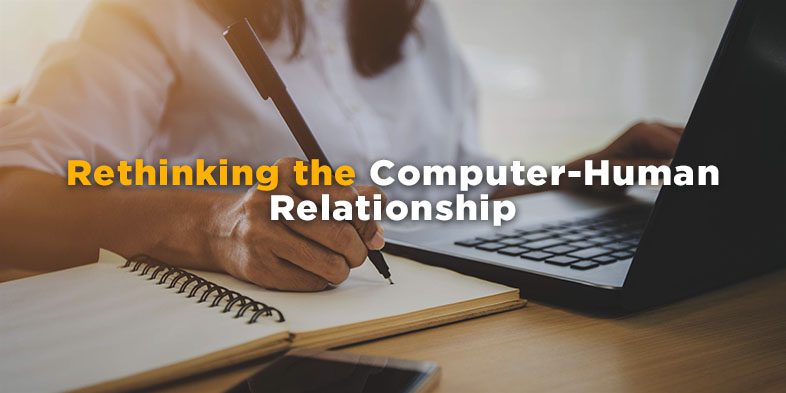Rethinking the Computer-Human Relationship


As part of Solutions Review’s Contributed Content Series—a collection of contributed articles written by our enterprise tech thought leader community—Vaibhav Vohra, the Chief Product and Technology Officer at Epicor, delves into the concept of rethinking the “computer-human relationship” in the ERP marketplace.
 Computer scientists have been discussing the imminent arrival of human-centric computing for decades. It sounds great on paper but less so in practice. Yes, computers and technology have utterly transformed workplace productivity. But every day bears witness to a frustrating reality: instead of machines serving humans, it’s usually the other way around. Over the years, our servitude has only grown worse.
Computer scientists have been discussing the imminent arrival of human-centric computing for decades. It sounds great on paper but less so in practice. Yes, computers and technology have utterly transformed workplace productivity. But every day bears witness to a frustrating reality: instead of machines serving humans, it’s usually the other way around. Over the years, our servitude has only grown worse.
The futurist Michael L. Dertouzos, who used to run MIT’s Laboratory for Computer Science, wrote eloquently about this challenge, noting that all too often, it seemed as if the advanced systems we built were in charge, not us. Whether we were talking about coding languages, scripts, or firmware, machines invariably restricted how we spoke with them.
But that’s not to say we’re condemned to imagine a future perennially beyond reach. With the advent of artificial intelligence (AI), we now have an opportunity to remake the current computing paradigm so that machines work with us in ways that are more convenient to humans. Let’s see how this might unfold in the ERP world, where customers face several common challenges.
Machines That Work with Us, Not Against Us
Even though ERP contains troves of information, it’s often a struggle to access data and systems of record. It’s also not easy to get ERP systems to answer discrete questions so they can provide insights. This is a backward approach. Machines should be sending customers updates on things that really matter.
So, as we design a world around us in the shadow of AI, we can realistically think about flipping the script. We don’t need to be locked into the position of supplicants having to beg the machine with questions to complete our tasks. We can reimagine a future in which machines learn how to work more effectively with people, sending us the information that matters most, knowing what we need to know, and understanding our jobs.
The industry has been making progress toward that goal. For instance, the last ten years of ERP and cloud computing have brought better data security, privacy, and scalability—all critical to enterprises. However, that work needs to continue to empower workers further so they can make smarter decisions.
The overarching goal should be to turn the interaction into more of a real conversation rather than a one-way, screen-based diktat. That starts by equipping the people who do the actual work with better tools. And this is happening as we speak. Researchers are now developing different applications of AI to help promote these changes. With better data models and queries at their disposal, users will benefit from systems that mitigate AI’s infamous tendency to hallucinate and so get their ERP to provide more accurate results. Another area of focus will be to make ERP systems searchable so that customers can deploy natural language processing.
The Next Big Leap
As we build systems to engage with robots, sensors, and machines and connect to other software, the world of ERP is rapidly changing. We’re now at the point where we can transform ERP. Instead of a massively complex system of records, we can think about a people-centric, easy-to-use system of insights and actions.
AI will help power this shift thanks to its ability to predict what’s most important to us. Changing how we interact with machines will make systems easier to use and more useful. What’s more, we’ll allow newly empowered workers to engage with systems through natural language to derive important signals with alerts, whether they be pricing, supply chain, or productivity trends.
Instead of focusing on tasks such as getting access to the correct data, machine, or supply chain insight (a current challenge with all ERPs), newly empowered workers will be able to focus on higher-value functions—innovating new products, creating new business models, and redesigning processes to become more efficient. In other words, it is a tool for anyone and everyone who has an essential job to do.























